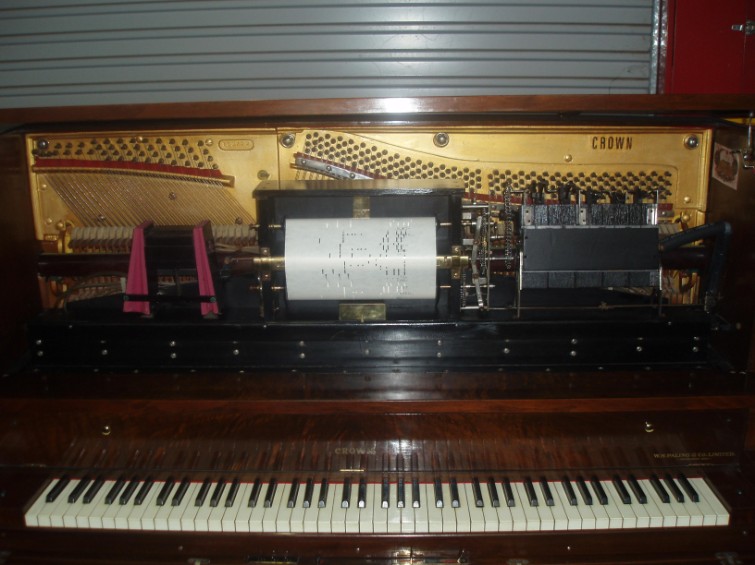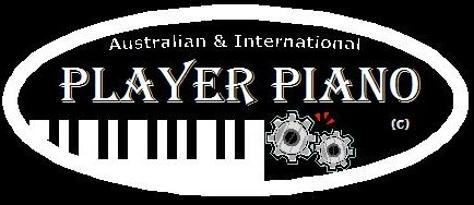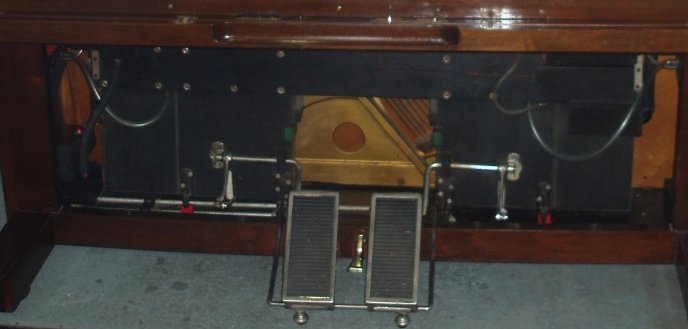Autopiano/Standard Dust Screens
Unknown to some Autopiano/Standard owners, there are a series of wire dust screens located in the valve box between the tracker pneumatics. If not cleaned regularly, the tracker pneumatics will become less responsive over a period of time, until they stop working altogether. The screens are easily accessed by unscrewing the access panel on top of the valve box, and carefully brushing off each of four screens. Do not vacuum, as the screens are seated in tightly, but not glued, so vacuuming can remove the screen completely. These dust screens are a valuable feature of this make, and are designed to catch dust and paper debris that can be released from rolls, old and new. Clean them, but do not permanently remove them, or the dust and debris will travel down underneath the valve pouches, and will ultimately stop the pouch from doing it's job. If the screens have not been regularly cleaned, a large quantity of debris will be evident in the screen access port, this must be cleared away, in order to access the screens. This cleaning should be performed every 6-12 months, for optimum tracker operation.
The tracker apparatus in the Autopiano and Standard player actions are, in my opinion, the finest design ever made, work reliably, responsively and are not likely to ever shred a roll. There are two inlet holes at either side of the tracker bar, each time the outer hole on either side is uncovered, atmosphere activates the corresponding pneumatic to move the roll back over the inlet, and thus does an excellent job of keeping the roll centered.


An easily identifiable Autopiano/Standard installation.
One of the better designs for simplicity, reliable operation and relative ease of restoration, the Autopiano/Standard player action is a double valve system. This means that when a perforation opens a tracker bar hole, a small primary valve [located in the primary valve chest at top of stack directly under the spool-box] is activated and in turn activates the corresponding main valve [located behind the front panel] to collapse the pneumatic.
They are usually fitted with transposing tracker bars, with the tracker holes set in slide sections that will remain stationary when the tracker bar is moved for transposing purposes. This ensures continued correct centring by the roll tracking pneumatics.
Made up of a series of wooden boards, the action is easy to remove and dismantle, as each board is screwed together in sandwich style. Leaks to atmosphere are relatively easy to locate and it is vital that all screws exert a strong hold on the timber, as the vacuum channels run through a horizontal board and are screwed with gasket to a vertical board. This L type connection must be tight. All gaskets must be in good order, so should be replaced for re-assembly.
Each Autopiano/Standard action has a five point air motor, and when the slider valves are calibrated correctly, will operate seamlessly. Each slide valve face should be treated with powdered graphite in spirits, rubbed into the facings to ensure lubrication. One of the easier air motors to restore.

Autopiano are deluxe, and feature robust pedals and linkages. The pump bellows consist of trunk, two extractors, two smaller reservoirs, built in air motor governor and usually incorporate a built-in crash valve, that will accent notes with full suction when a single sharp pedal force is applied.
In most models, bass and treble pneumatic hammer rail lift is included, and is applied to either as the music demands, by use of two pallet valve buttons in the key-slip.
Recommended for amateur restorers as a first re-build, due to ease of access to all restorable components, and simplicity of design. Usually fitted to good quality pianos.